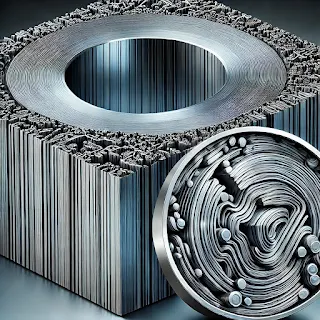Why Abrasion Resistant Plates Are Essential for Industrial Strength
Introduction
In industries where heavy machinery and equipment endure extreme wear and tear, the importance of durability cannot be overstated. Abrasion-resistant plates are the backbone of many industrial operations, offering unmatched toughness and longevity. These plates are specially designed to withstand friction, impact, and mechanical wear, making them an integral part of industries such as mining, construction, and manufacturing. By using abrasion-resistant plates, companies can significantly reduce maintenance costs, improve efficiency, and extend the lifespan of their equipment.
What Are Abrasion Resistant Plates?
Abrasion-resistant plates, often referred to as wear-resistant steel plates, are a type of steel plate designed to resist wear and tear caused by mechanical operations. These plates are made from high-carbon alloy steel, which undergoes a heat treatment process to enhance its hardness and durability. The hardness of abrasion-resistant steel plates is measured using the Brinell Hardness Number (BHN), with higher values indicating greater resistance to wear.
The composition of abrasion-resistant plates includes elements like carbon, manganese, and chromium, which contribute to their strength and toughness. These plates are widely used in industries where surfaces are exposed to excessive abrasion, ensuring longevity and performance.
Key Benefits of Abrasion Resistant Plates
Enhanced Durability
The primary advantage of abrasion-resistant plates is their exceptional durability. They are specifically engineered to handle extreme wear conditions, reducing the need for frequent replacements.Cost-Effectiveness
By incorporating abrasion-resistant steel plates into industrial applications, companies can significantly cut down on maintenance and replacement costs. These plates offer long-term savings by preventing premature equipment failures.Improved Performance in Harsh Environments
Industries like mining and construction operate in extreme conditions where equipment faces continuous stress. Abrasion-resistant plates provide superior protection against impact and mechanical wear, ensuring smooth operations.Extended Equipment Lifespan
Machinery and equipment fitted with abrasion-resistant steel plates experience an extended operational life, leading to improved productivity and reduced downtime.
1. Mining Industry
The mining sector extensively uses abrasion-resistant steel plates in equipment such as dump trucks, excavator buckets, and conveyor belts. These plates prevent excessive wear, ensuring that machinery remains operational for extended periods.
2. Construction Industry
Construction equipment, including bulldozers, loaders, and crushers, operates under extreme pressure and friction. Abrasion-resistant plates help maintain the structural integrity of these machines, reducing maintenance downtime.
3. Manufacturing and Heavy Engineering
Manufacturers of heavy machinery, such as agricultural equipment and industrial tools, utilize abrasion-resistant steel plates to enhance the strength and longevity of their products.
4. Cement and Steel Plants
Cement mixers, hoppers, and chutes are constantly exposed to high-impact materials. The integration of abrasion-resistant plates prevents equipment deterioration, ensuring seamless operations.
Choosing the Right Abrasion Resistant Plate
When selecting an abrasion-resistant steel plate, several factors must be considered:
Hardness Level: Plates with a higher BHN rating (400-600 BHN) provide better wear resistance.
Thickness: The required thickness depends on the level of wear exposure in specific applications.
Tensile Strength: Higher tensile strength ensures the plate can withstand heavy impact and stress.
Corrosion Resistance: Some industries require plates that can resist both abrasion and corrosion.
Maintenance and Care for Abrasion Resistant Plates
To maximize the lifespan of abrasion-resistant plates, proper maintenance is essential:
Regular Inspections: Checking for signs of wear and tear helps in timely replacements or reinforcements.
Proper Installation: Ensuring that the plates are correctly installed minimizes unnecessary stress and enhances efficiency.
Lubrication and Coatings: Applying protective coatings can further enhance the durability of abrasion-resistant steel plates.
Future Trends in Abrasion-Resistant Steel Technology
With advancements in material science, the future of abrasion-resistant steel plates looks promising. Innovations such as nano-structured coatings, self-healing steel, and hybrid alloys are expected to revolutionize industrial durability. These new materials will not only enhance abrasion resistance but also offer improved flexibility and lightweight properties.
Conclusion
The significance of abrasion-resistant plates in industrial applications cannot be overstated. Their ability to withstand extreme wear and tear makes them an essential component in industries such as mining, construction, and manufacturing. By choosing high-quality abrasion-resistant steel plates, companies can ensure long-term savings, improved performance, and enhanced equipment longevity. As technology advances, the development of even more efficient abrasion-resistant materials will continue to shape the future of industrial strength.





Comments
Post a Comment